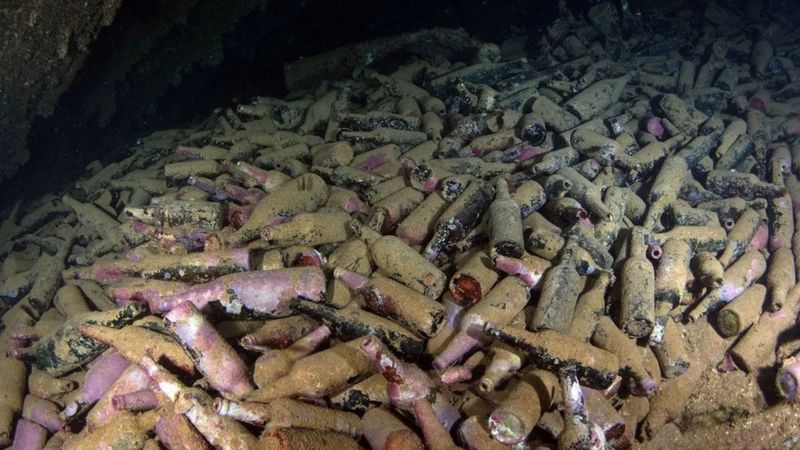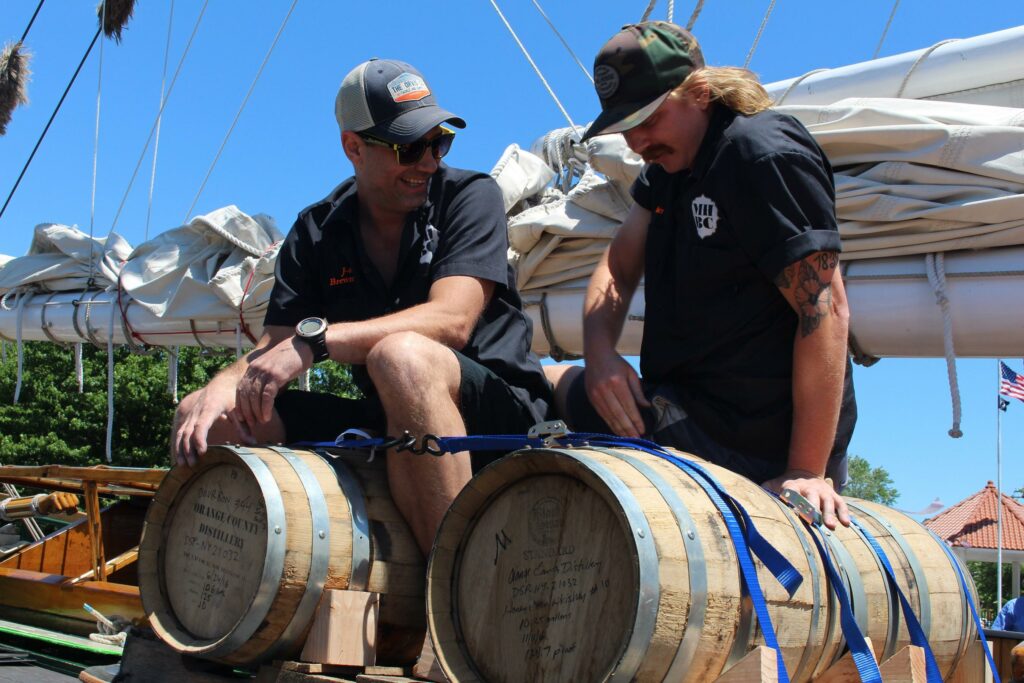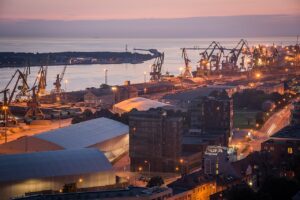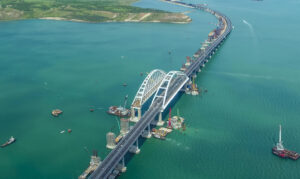Yo-ho-ho and a bottle of freight: how shipping has affected the alcohol industry

Ruslan Soroka, Ukrainian Shipping Magazine journalist
Did you know that Hennessy barrels will be delivered on sailing vessels again? Or that divers are retrieving 200-year-old bottles from sunken ships around the world? And the fact that without shipping there would be no rum, Madeira wine, the usual gin or India Pale Ale? USM shares how shipping has impacted the alcohol beverage industry.
Cognac under sails
A huge amount of alcohol travels in pre-packages in containers, but alcoholic beverages and shipping continue to be “friends”. For example, in order to reduce its environmental impact, Jas Hennessy will transport 4 million bottles of cognac annually between Montoir de Bretagne in France and Baltimore in the USA using sailing vessels from Neoline.
Neoline vessels are 136 meters long and equipped with 4,200 m2 of sails. Their utilization will reduce the carbon footprint on transatlantic sea routes by 90%.
Jas Hennessy & Co President Laurent Boyo said that “shipping has always been a defining factor in the development of the company. We want to ensure the reliability of our business at all levels, from vine to glass. The innovative and environmentally friendly solutions developed by Neoline echo the company’s position and will allow us to significantly reduce air emissions and work to protect biological diversity.”

Underwater beer
Brewers around the world are looking for bottles from ships that sank hundreds of years ago. And it’s not about the desire of brewers to taste rare beer – resurrecting old yeast can have many uses. For example, to clean up dirt or help in the production of fragrances for the perfumery industry.
Thus, in July this year, the “treasure” was discovered by diver Steve Hickman, who explored Wallachia – a cargo ship that sank in 1895 off the coast of Scotland. Having begun his dive to Wallachia in the 1980s, Hickman has lifted dozens of bottles of whiskey, gin and beer from the bottom. He handed over the bottles raised from the bottom to the research company Brewlab, specialists of which, together with scientists from the University of Sunderland, were able to extract live yeast from three bottles. They then used them to recreate an old beer.
Hickman is not alone in his endeavors. In 2018, a similar project in Tasmania used yeast from beer bottles found on a ship that sank 220 years ago to recreate beer that could have been drunk in the 18th century.
But all this is happening now, in the years when you can get a bottle of rum just by going to the supermarket. But hard liquors and shipping have been keeping in step from the dawn of time. And the most important of them is rum.

Rum, pirates and nuclear weapons
When the Europeans sailed to the New Earths, they tried to capitalize on the vast tracts of unused soil. One of the solutions was the cultivation of sugar-cane. Sugar was extracted from its juice, the juice was boiled down, powdered sugar was added, at the moment of boiling, sugar crystals and dark syrup – molasses formed around the powder particles.
At that time, 100 tons of cane produced 10 tons of sugar and 5 tons of molasses. Because the molasses went either to feed the prisoners, or poured out into the rivers. However, cheap alcohol was needed to be used as a medicine in the territories of the colonies, and there was too much molasses left.
Over time, the British, French and Dutch, due to competition and the lack of a fleet, began to issue letters of marque. So they allowed the captain of any ship with such a paper to rob ships of any other countries, for a certain percentage to the treasury of the state that issued the certificate. The Caribbean region was swarmed with marque ships, which at some point stopped paying to the treasury and went on pasture, thereby turning into pirates.
It turns out that rum was the reason for the emergence of piracy.
The rum itself appeared due to the fact that the molasses fermented well and lends itself well to distillation. This is exactly what the captains needed during the long voyages: a durable and strong drink perfectly supported the morale of the crew.
At the time, the crew usually kept their morale with the help of beer and wine, but none of these drinks were stored for long in the Caribbean. The sailors’ beer foxed , and the wine turned into vinegar. The solution to the problem was found in the same place – it turned out to be rum, which was then quite deservedly nicknamed Kill Devil.
They joke that at that time the sailor drank half a liter of rum a day, but this could not last long. Over time, rum began to be cut with water and lemon juice (again, to prevent scurvy), as a result, another drink was obtained from it – grog. The name comes from the nickname of Admiral Edward Vernon (he wore a coarse cloak “grogram” without taking off).
As a result, the Royal Navy has been actively buying rum from local producers for many years, and a warship was always on duty near the distilleries. This state of affairs was beneficial for both sides: the producers could not be afraid of attacks by pirates, and the captains did not doubt the morale of their charges.
Since 1664, rum has been produced on Staten Island. Then the British built the first plant for the production of this alcoholic beverage. In 1667, a similar enterprise was founded in Boston. Rum soon began to generate income for the British colonies, so it was used as currency. Rum’s popularity grew so much that rum was the impetus for a trade agreement known as the “Triangular Trade”, which helped to establish the slave, molasses and rum trade.
Granted, rum has not been used in the Navy since 1970 – it was decided that it was better to always be sober on ships with nuclear weapons.

Madera – wine, death and the equator
When Italian sailors in the 4th century and then the Portuguese in the 15th century independently discovered an island located in the Atlantic Ocean, they were struck by the lush green vegetation that covered the entire island surface. This wooded island, named Madeira (Madeira in Portuguese, Madera in Spanish – forest, tree), later gave its name to the original strong wine Madeira. Soon, however, some of the wild forests were replaced by sugarcane plantations from Sicily and Malvasia vines.
The city of Funchal becomes the center of viticulture and winemaking. The harvested grapes were taken for processing, then placed in wooden basins, crushed with their feet and the pulp was fermented. Then the wine was separated from the pomace and placed in oak barrels. The end product highly extractable, big and blunt wine only became Madera by heating it under certain conditions.
But how the Madera production technology was discovered is already a merit of shipping.
An unknown entrepreneur shipped a large lot of wine to India on a sailing vessel. On the way from Madeira to India, the ship circled Africa and crossed the equator twice, and the journey itself took several months. All this time, the wine was in barrels on the upper deck and was constantly exposed to the sun’s heat.
And then a misfortune happened – the recipient of the wine died, and the heirs refused to redeem the order. And the captain had to return to Madera carrying wine and cross the equator twice again. When the owner was informed that the wine had returned back, he thought he was broke and decided to commit suicide. But before his death, the merchant asked to bring a glass of this wine.
When the wine was opened, thoughts of death left the owner. The wine acquired new unusual qualities, and the islanders began to look for the reason for this improvement. They even thought that the quality of the wine was influenced by the rolling of the sea. After failures with imitation of sea rolling on the shore, it was possible to find out that Madera is becoming just such a wine because of the heat.
And for a long time, the still poor Spaniards received Madeira in the following way: they rolled barrels of wine on the giant upper decks of their heavily armed galleons – to the equator, and back. Technology, of course, has completely changed, but it was from that time that heat became one of the defining factors in the production of Madera.

Jin, universal remedy and ports
Many of the cocktails that we now order in bars did not appear by chance either. For example, the famous gin and tonic.
The drink was created not by gourmets who hunger for exquisite taste, but by English sailors who cared about their health. Juniper, on which gin is brewed, was already known as an excellent remedy for heartburn, this was especially true for the British, who were completely unprepared for the spicy food of the Far Eastern colonies.
And the tonic itself? The quinine it contains has been used to treat malaria for a long time. Unfortunately, drinking a tonic is not the most pleasant experience, so the sailors quickly found a pleasant solution: mix the tonic with gin, add lemon juice to protect against scurvy, and the perfect remedy is ready.
The popularization of gin is also associated with ports. The Port of Edinburgh and the Port of Leith have a huge and ancient history of gin production, import and export, dating back to the 18th century, to the first gin craze.
Netherlandish jenever, a strong alcoholic beverage obtained by distilling refermented wort from malted barley and flavored juniper berries with other spices, passed through the port of Leith from the Netherlands as elite spices and ingredients. Therefore, it is not surprising that Edinburgh tasted juniper-based alcohols.
By 1777, in addition to eight legal industries, there were about 400 illegal ones in the city, and a total unfatuation for gin had begun. In the early 1800s, Scotsman Robert Stein invented the famous column still, allowing continuous distillation. This enabled producers to move away from traditional stills and produce alcohol more efficiently.
Scottish producers began exporting neutral grain alcohol to London via the Port of Leith – and this is how the famous London Dry gin style, known to this day, was born.

India Pale Ale (IPA) – Market Dumping, Economy & Hops
Contrary to the name, IPA is a British pale ale with a stronger hop than regular ale. One of the big historical misconceptions is that IPA is the first beer that could make it to India in good condition. British beer was successfully exported long before the first IPA, and even low-alcohol “table beer”. But over time, the British have found several important factors related to exports.
The first is that the stronger the beer is, the more likely it will not spoil. And IPA is still a strong and very bitter beer. The second factor is that beer with more hops lasts better. And here the IPA wins again with its stronger hopping than a regular ale.
The culture of consumption influenced the fact that IPA was shipped by sea to India – the tastes of the drier lager beer were better suited to the Indian climate than the sweet, rich porters.
It all began in the middle of the 18th century, when the owner of the Bow brewery, a certain George Hodgson, established relations with the captains of the East India Company. It so happened that the ships of these captains were moored only a couple of miles from his brewery. The decisive factor was that the captains of merchant ships were allowed to carry part of the cargo for free, so they actively earned money on everything that reminded the colonialists of a distant and rainy home island, especially on any kind of alcohol.
Initially, Hodgson supplied the captains with porter, then the regular ale, which was no different from other ales of the time and was not a full-fledged IPA yet.
But by the 1820s, the situation in the beer export market to India began to change. The East India Company began to have competitors, England began to introduce free trade laws, and Hodgson was already decently tired of everyone with his dumping, intrigues and machinations, which til that time allowed him to successfully squeeze other exporters out of the Indian beer market.
Another important factor was the fact that in 1822, due to political friction between the Russian and British empires, one of the brewing capitals of England – Burton-upon-Trent – lost its Baltic sales market. Burton had its own conditions and technologies for the production of intoxicated drinks, which made this small town one of the main centers for the production of beer for export.
It was Burton’s brewers who were chosen by the representatives of the East India Company in the twenties of the XIX century. They were brought a sample of Hodgson’s ale and asked to brew something similar. Already in 1823, the Allsopp brewery sent its first IPA to India, and in 1825 changed the recipe, removing malt and adding bitterness, and received the first real IPA, also called Burton IPA.
Enraged by this betrayal, Hodgson shooted Niagara: the entrepreneur decided that he himself could eliminate the East India Company from the existing equation and charter his small merchant fleet. The company didn’t like this, and over the next decade it removed George Hodgson himself from the equation.
Burton breweries became the main producers of IPA for the Indian market, and in the middle of the 19th century, the railway came to England, opening up vast opportunities for the distribution of beer in the domestic market. India Pale Ale became the new beer of the industrial-railroad age, where there was no place for shipping.





